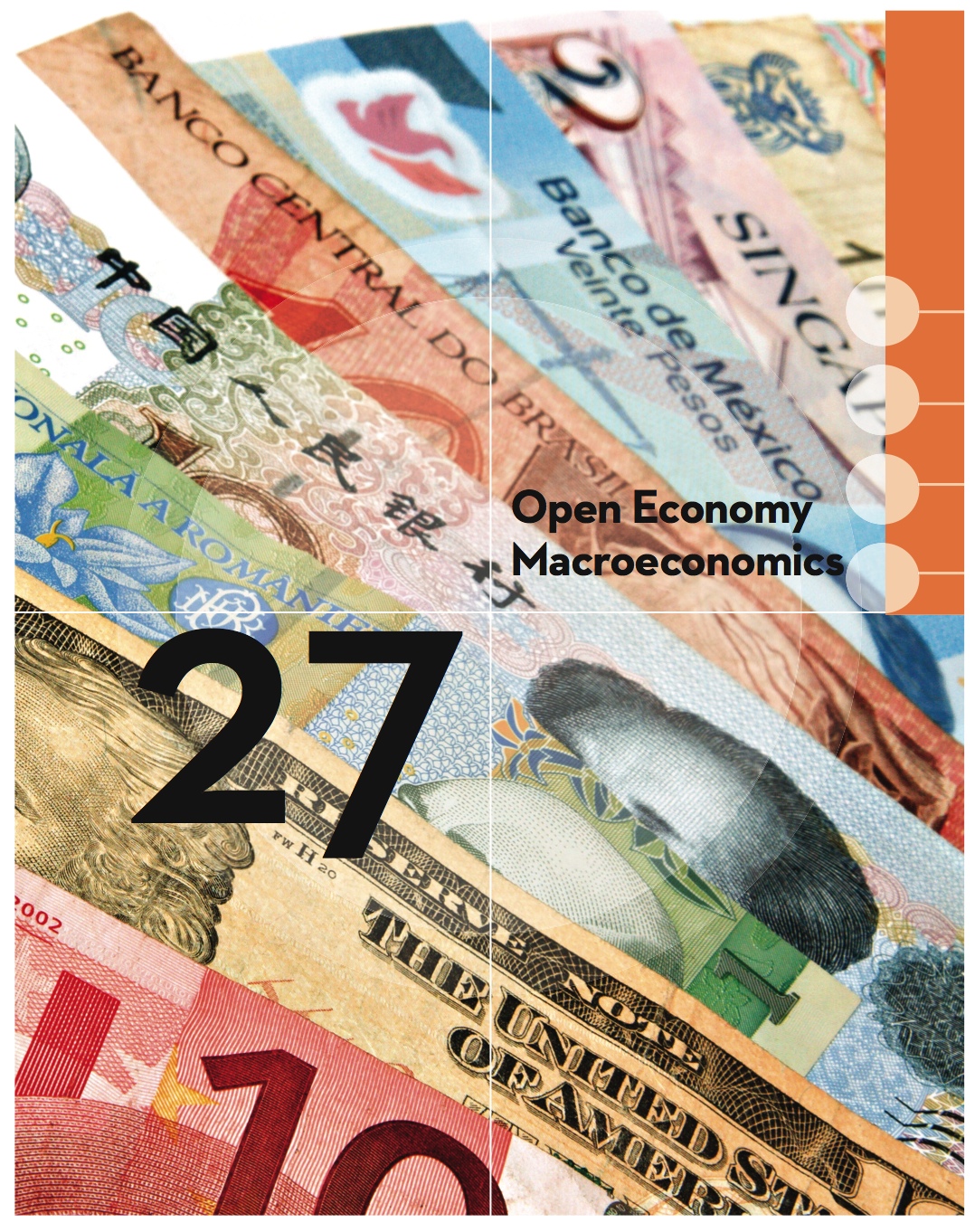Chapter Introduction

After studying this chapter you should be able to:
- Define the current account and the capital account in the balance of payments between countries.
- Explain the difference between nominal and real exchange rates.
- Describe the effects of currency appreciation or depreciation on imports and exports.
- Describe the effects of changes in inflation rates, disposable income, and interest rates on exchange rates.
- Explain the differences between fixed and flexible exchange rate systems.
- Describe the implications for fiscal and monetary policies of fixed and flexible exchange rate systems.
You probably are aware of international finance if you have traveled abroad. To purchase goods and services in another country, you need to have an amount of that country’s currency. True, you can use credit cards for major purchases, but you still need some currency for daily transactions. In Britain, you need to pay in British pounds; in France, you need euros. British and French shopkeepers and public transportation officials will not accept U.S. dollars. This means that at the beginning of your trip, whether at the airport or at a bank, you have to exchange your dollars for the currency of the country you are visiting.
This process of exchanging money applies to international trade as well. You may pay dollars for your Burberry scarf or Louis Vuitton handbag in a store in the United States, but eventually your dollars have to be converted to pounds or euros when your payments make their way back to Britain or France, respectively. And if U.S. companies export goods abroad, they will want to bring dollars back to the United States, whether the goods are paid for originally in dollars or not.
Furthermore, in today’s open economies, individuals can hold domestic and foreign financial assets. Your own financial portfolio might include foreign stocks, bonds, and currency, as well as domestic stocks and bonds. Buying and selling foreign securities and goods involves the buying and selling of foreign currency, also known as foreign exchange.
We can see that foreign exchange transactions for tourism, trade, and investment would seem to be large in number and amount. In fact, foreign exchange transactions dwarf the volume of exports and imports, often by as much as 30 to 40 times, in the same way that the annual value of all stock transactions far surpasses the market value of all companies on the New York Stock Exchange. Most foreign exchange transactions are conducted not for trade but for financial or speculative purposes. The social benefit to emerge from this speculation is a highly liquid foreign exchange market that ensures the possibility of trade. The large volume of speculative trade in currencies means that there will always be a market for international trade.
In this chapter, we want to look at foreign exchange markets to get a sense of how policymaking in the United States is affected by an open worldwide economy. We start with balance of payments accounts, which are to open economy macroeconomics what national income accounts are to an individual country’s macroeconomic accounts. This accounting structure is the basis for open economy analysis. We then examine the foreign exchange market in detail, looking at both the trade and financial aspects of those common foreign currency events: currency appreciation and depreciation. Finally, we put this all together when we view fixed and flexible exchange rate systems and discuss how an open economy affects monetary and fiscal policymaking.